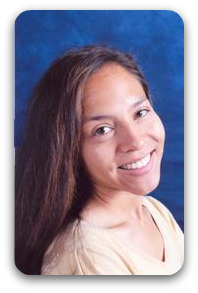Below, I will share a step by step approach that will help students find the lowest common denominator EVERY TIME without guessing.
Step 1: Find the biggest denominator (BD).
For example, let's imagine you want to subtract 1/16 from 7/12. Your denominators are 12 and 16. Your biggest denominator (BD) is 16. 12 is your little denominator (LD)
Step 2: Ask the question, can my big denominator divide my little denominator without a remainder? If yes, than BD is your least common denominator. If no, then multiply BD by 2.
For example, can 16 divide 12 without a remainder? No! Then, let's multiply BD by 2.
Step 3: Now, take your big denominator (BD) and multiply by 2. You get, BDx2. Then ask yourself, does BDx2 divide my little denominator without a remainder? If yes, then BDx2 is your lowest common denominator. If not, then multiply BD by 3.
For example, 16x2=32. Can 32 divide by 12 without a remainder? No! Then let's multiply BD by 3.
Step 4: Now take your big denominator (BD) and multiply it by 3. You get BDx3. Then ask yourself, does BDx3 divide by my little denominator without a remainder? If yes, then BDx3 is your least common denominator. If not, then multiply BD by 4.
For example, 16x3=48. Can 48 divide by 12 without a remainder? YES -- 4 times! Then 48 is our lowest common denominator!
Now we are done with our example, but if you weren't done, then you would keep going up by multiplying your BD by the next integer and testing for divisibility by your little denominator. For example, you would then multiply your BD by 4 and test. If that didn't work, you would then multiply your BD by 5 and then test for divisibility by our LD. And so on.
Though the questions and responses are very repetitive for each step, encourage your student to repeat them out loud with you. As a math tutor, I have found that the repetition out loud helps students memorize the steps so that they can hear them in their mind when they are doing their own least common denominator problem. Eventually, the steps become automatic because you have said the sequence over and over again.
Inga Goodwin is a professional tutor with Task Whiz Tutoring, a Nashville based tutoring service that provides in home or online tutoring to students in all subjects, grades K-12. Find your Nashville math tutor online.
Step 1: Find the biggest denominator (BD).
For example, let's imagine you want to subtract 1/16 from 7/12. Your denominators are 12 and 16. Your biggest denominator (BD) is 16. 12 is your little denominator (LD)
Step 2: Ask the question, can my big denominator divide my little denominator without a remainder? If yes, than BD is your least common denominator. If no, then multiply BD by 2.
For example, can 16 divide 12 without a remainder? No! Then, let's multiply BD by 2.
Step 3: Now, take your big denominator (BD) and multiply by 2. You get, BDx2. Then ask yourself, does BDx2 divide my little denominator without a remainder? If yes, then BDx2 is your lowest common denominator. If not, then multiply BD by 3.
For example, 16x2=32. Can 32 divide by 12 without a remainder? No! Then let's multiply BD by 3.
Step 4: Now take your big denominator (BD) and multiply it by 3. You get BDx3. Then ask yourself, does BDx3 divide by my little denominator without a remainder? If yes, then BDx3 is your least common denominator. If not, then multiply BD by 4.
For example, 16x3=48. Can 48 divide by 12 without a remainder? YES -- 4 times! Then 48 is our lowest common denominator!
Now we are done with our example, but if you weren't done, then you would keep going up by multiplying your BD by the next integer and testing for divisibility by your little denominator. For example, you would then multiply your BD by 4 and test. If that didn't work, you would then multiply your BD by 5 and then test for divisibility by our LD. And so on.
Though the questions and responses are very repetitive for each step, encourage your student to repeat them out loud with you. As a math tutor, I have found that the repetition out loud helps students memorize the steps so that they can hear them in their mind when they are doing their own least common denominator problem. Eventually, the steps become automatic because you have said the sequence over and over again.
Inga Goodwin is a professional tutor with Task Whiz Tutoring, a Nashville based tutoring service that provides in home or online tutoring to students in all subjects, grades K-12. Find your Nashville math tutor online.

 RSS Feed
RSS Feed